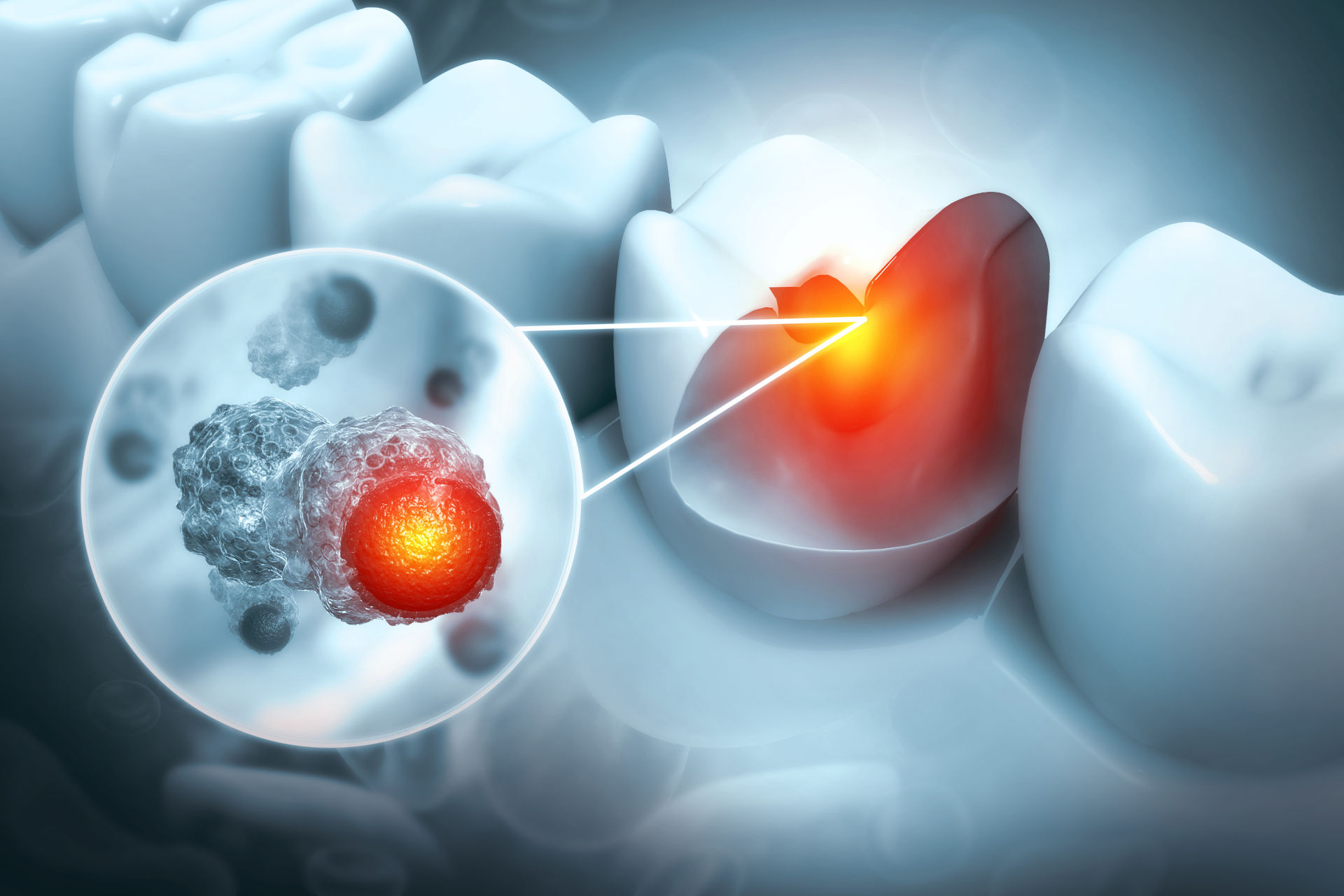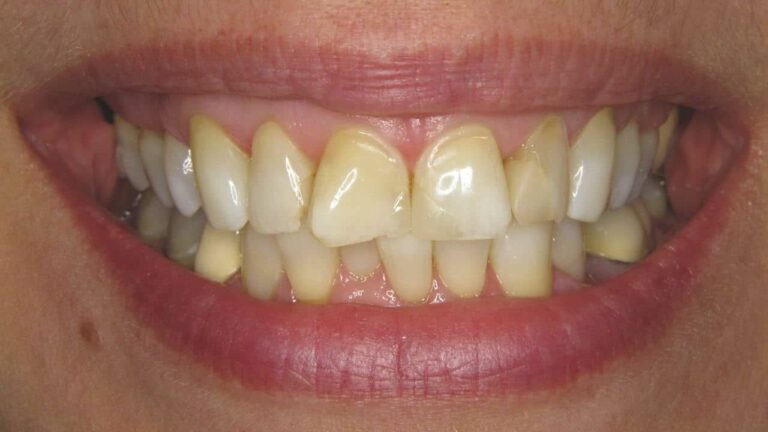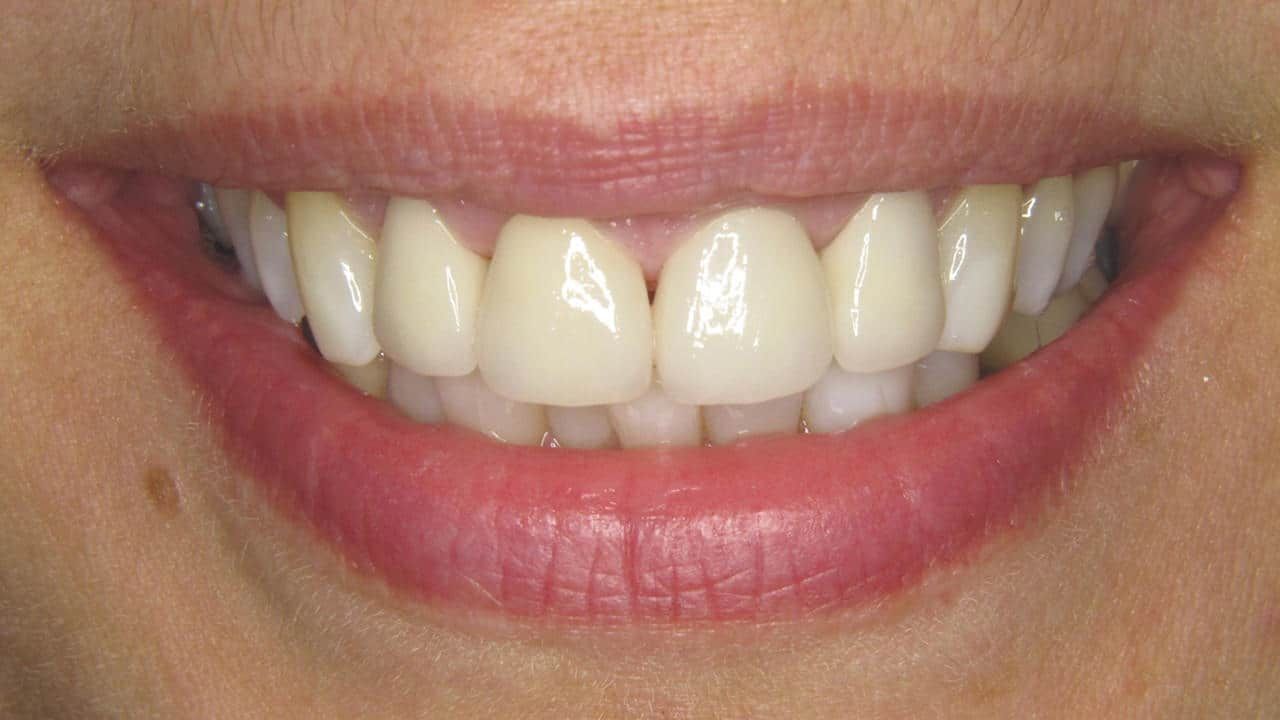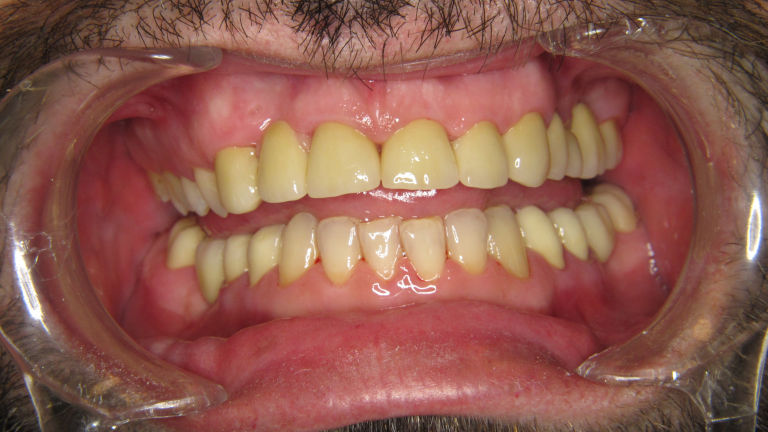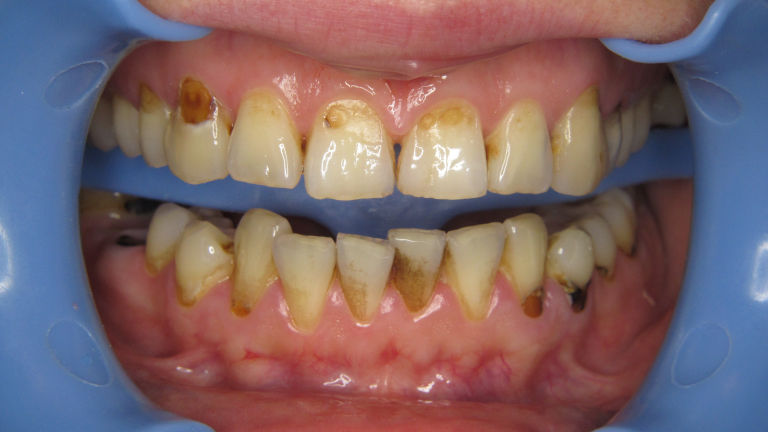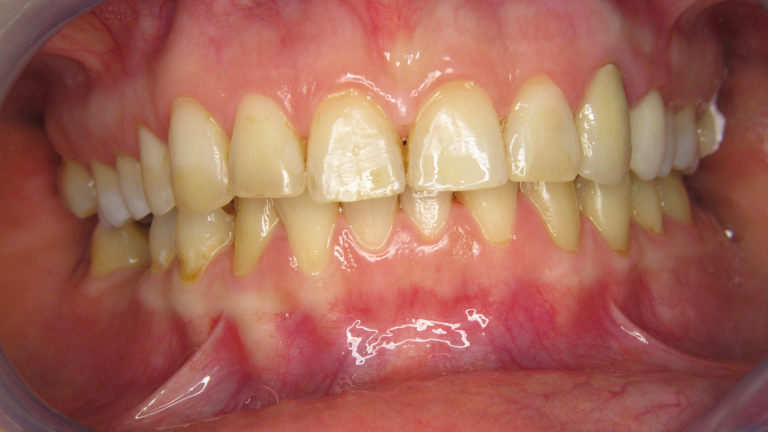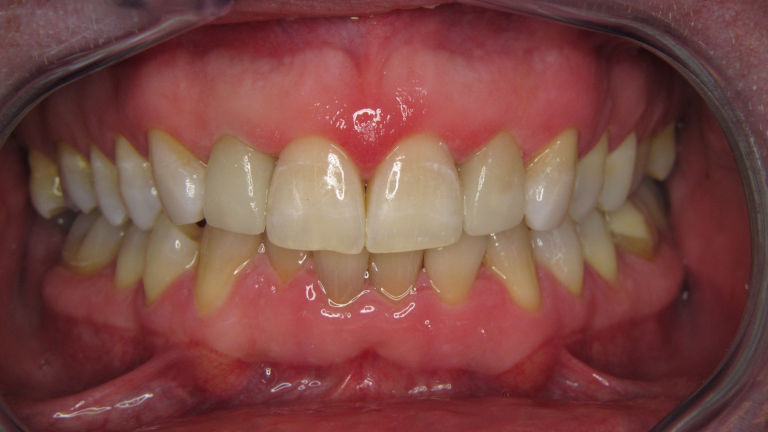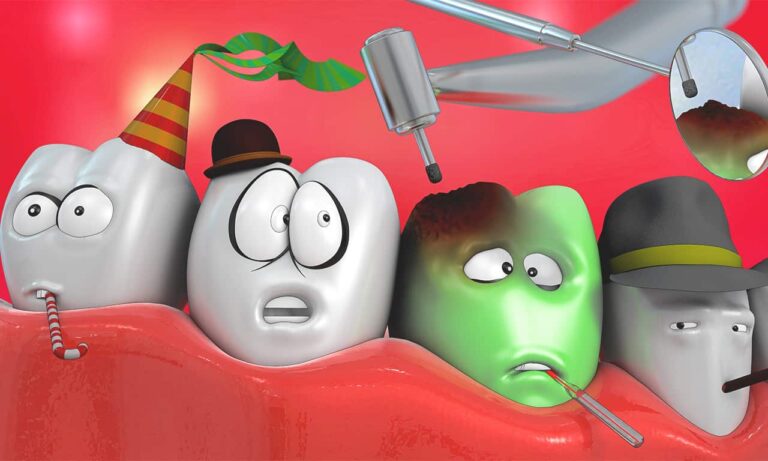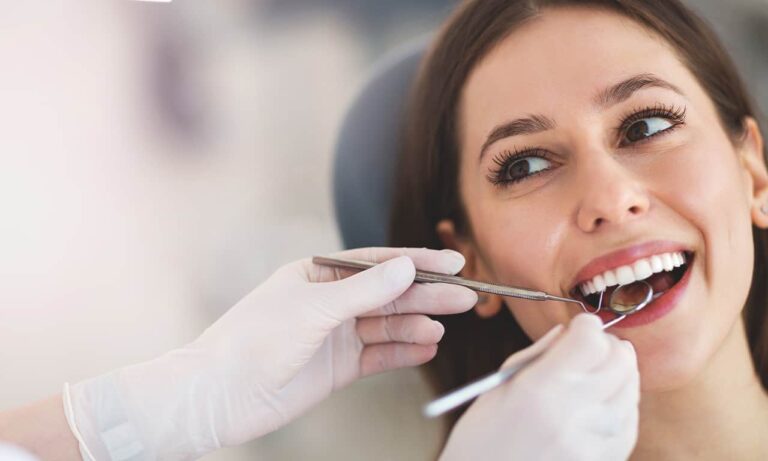Vital Pulpa kezelés
A mélyen szuvas, kritikus állapotú fog kezelésére sok fogorvos gyökérkezelést ajánl. Azonban ezt a legjobb elkerülni. Ha időben lép, a Vital pulpa kezelés módszertanával ez sikerülhet!
Vital Pulpa
A kezelés előnyei
A Vital Pulpa kezelés az élő, ám kritikus állapotú fog kezelésének módszertana. Mély szuvasodás esetén – ha időben lép – megmenthető a fogideg, orvosi nevén pulpa. A Budapest Dental Fogászaton az Európai Endodonciai Társaság mély szuvasodás managementjére kiadott Guideline protokollja alapján dolgozunk.
Elkerülhető a gyökérkezelés
Élő fogaknál, amennyiben a fertőzés még nem járta át a fogideg szöveteket, a fogideg gyulladás visszafordítható, elkerülhető a gyökérkezelés a Vital Pulpa terápiával, de ez csak időben elvégezve lehet sikeres.
A kezelés menete
A fogorvos, a fog tisztítása és fertőtlenítése után a fogideg kamra tetejére speciális hatékonyságú Biodentin anyagot helyez, mely gyógyítja a gyulladást és regenerálja a fogat.
Szelektív dentinmanagement
A Vital Pulpa Kezelés lényeges eleme a szuvas szövetek szelektív és szenzitív kezelése a fogfúrás során.
Végleges fogfelépítés
A fog végleges ellátására a Vital Pulpa Kezelés után kb. 6 hónappal számíthatunk. Ennyi idő kell a pulpaszövet regenerációjához. A felépítés történhet biomimetikus fogtöméssel vagy fogbetéttel.
Mit tud a Biodentine?
A Biodentine a világ első biológiai tömőanyaga, a fog szöveteivel kompatibilis anyag. A Biodentine-t a sejtek „sajátként” fogadják el, és a károsodott sejtek életképesek maradnak. Olvassa el esetbemutató blogcikkünket!
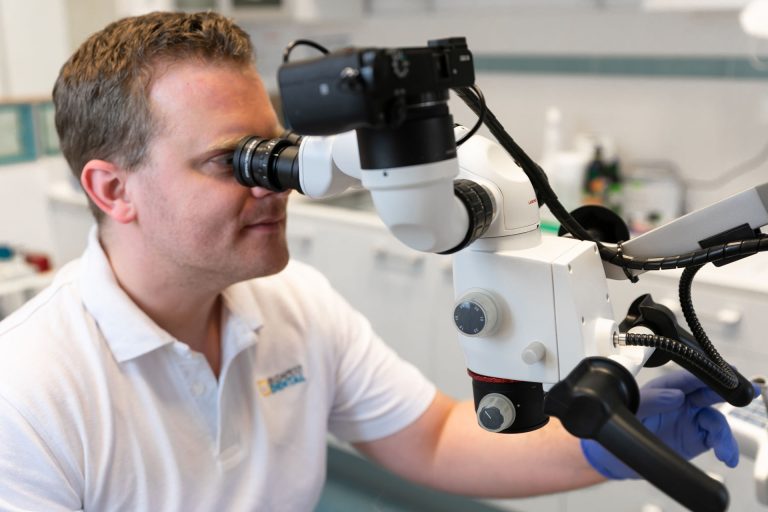
Árak
Vital Pulpa kezelés
A Vital Pulpa Kezelés nem önálló kezelés, hanem egy kezelés folyamat része. A pontos árakat az állapotfelmérés után a kezelési terv tartalmazza.
Vital pulpa kezelés – első alkalom
Mély szuvasodások, fájdalmas fogak kezelése gyökérkezelés nélkül, a fog élő szöveteinek megtartásával. A kezelésre vonatkozó fogászati árak az alábbiakat tartalmazzák: Szuvas vagy korábban tömött fog kezelése, sejtregenerációt indukáló anyaggal. A kezelés tartós ideiglenes töméssel zárul. A végleges helyreállítás árát a kezelés nem tartalmazza, az egy következő ülésben történik.
Bővebben35.000 Ft
Vital pulpa kezelés – második alkalom
A vital pulpa kezelés lehet egy vagy kétlépcsős folyamat. Az eset súlyosságától függően egy második lépésre is szükség lehet a kezelésben a végleges ellátás előtt. A kezelésre vonatkozó fogászati árak az alábbiakat tartalmazzák: vital pulpa kezelés 2. ülés. A kezelés ideiglenes töméssel zárul, nem tartalmaz végleges restaurációt.
Bővebben32.000 Ft
Fogínymenedzsment – deep margin elevation
Amennyiben a szuvasodás mélyen a fogíny alá terjed, a kezelés előtt szükség lehet a fog ínyközeli részének speciális helyreállítására. Ez a folyamat a deep margin elevation. A kezelésre vonatkozó fogászati árak az alábbiakat tartalmazzák: a fog mély, ínyszél közeli részének helyreállítása bis-GMA mentes kompozit tömőanyaggal, vital pulpa kezeléshez, gyökérkezeléshez, bevezető lépésként.
Bővebben15.000 Ft-tól
Végleges helyreállítás sikeres vital pulpa kezelés után
Mi történik a sikeres vital pulpa kezelés után? Helyreállítás tartósan! A vital pulpa kezelés sikere az eredeti fertőzés mértékétől, és a fogbélben elindult szöveti reakciók tipusától függ. Sikeres esetben a végső helyreállítás módja a hiányzó fogszövet mennyiségétől függ.
BővebbenEsetfüggő, onlay, inlay vagy fogtömés – árak lásd ott
Nagymértékű dentinszövet helyreállítás rugalmas kompozittal
Kerülje el a fog repedését! Nagymértékű dentinszövet hiány esetén speciális dentin pótlás szükséges a repedés elkerüléséhez. A speciális helyreállítás fokozza a sérült fog repedéssel, töréssel szembeni ellenállását. A kezelésre vonatkozó fogászati árak az alábbiakat tartalmazzák: nagy kiterjedésű dentin szövethiány pótlása üvegszál erősítésű kompozit tömőanyaggal, egy fognál, onlay, inlay vagy fogtömés készítése előtt.
Bővebben21.900 Ft-tól

Új páciensek részére
Először jár nálunk?
Nézze meg új pácienseink részére ajánlott aktuális csomagjainkat.
Jelentkezzen állapotfelmérésre!
Egyeztesse munkatársainkkal a fogazatával kapcsolatos elképzelését, akik orvoscsapatunk legmegfelelőbb tagját ajánlják majd az állapotfelmérés elvégzésére. Ezután az adott szakmai területen leginkább jártas fogorvosunk végzi el a kezelését.
Rendelőnk
1137 Budapest
Szent István körút 10. 3.em 8.
Nyitvatartás
H – Cs: 08:00 – 20:00
P: 09:00 – 15:00
Szo – V: Zárva
Orvosaink
Fogorvos csapatunk
Referenciák
Fedezze fel Ön is a cirkónium korona vagy az üvegkerámia héj lehetőségeit. Nézze meg esetbemutatásainkat!
Rólunk mondták
Nagyon nem szívesen járok fogorvoshoz és sajnos amúgy is tű fóbiás vagyok, nem jó kombináció! Nevelőapám és Öcsém ajánlották a Bp. Dentalt, és szerintem még életemben nem jöttem ki mosolyogva egy fogorvosi rendelőből. A Doktornő nagyon profi, mindent elmagyaráz, percek alatt kész voltunk. Az Asszisztens Hölgy is rendkívül segítőkész volt! Amúgy is, mintha egy nyugati országban jártam volna, mindenki udvarias, mosolyog, a szolgáltatás pedig magas színvonalú. Csak ajánlani tudom mindenkinek.
Mindenkinek ajánlom a Budapest Dental fogászatot, kedves, türelmes, profi orvosok, személyzet, külön köszönöm Dr. Némethy Miklósnak, hogy minden kezelési lehetőséget részletesen elmagyaráz.
Maximálisan elégedett vagyok az itt kapott kezelésekkel és hálásan köszönöm Dr. Némethy Miklósnak a kiváló munkáját, türelmét és precizitását. Továbbá köszönöm kedvességet és rugalmasságot amit minden egyes időpontfoglalás során megtapasztalok.
Amióta ide járok már nincs gyomorgörcsöm mikor elindulok a kezelésre. Itt figyelnek az igényeimre és annyira kíméletesen végzik a munkát amennyire csak lehet.
Nagyon elégedett voltam. Mindenki mindig nagyon kedves volt, soha nem kellett sokat várni, soha nem fájt semmi és egyszer sem mentem oda úgy, hogy „jaj, már megint fogászatra kell mennem”. ?
Hosszú ideje a legjobb szolgáltatást nyújtják. A rendelők kiválóan felszereltek, ami a modern fogászathoz szükséges, azzal rendelkeznek. A kezelés fájdalommentes, a személyzet kedves, és türelmes.
Kikhez volt szerencsém?
Időrendben: recepciósok, Dr. Déry Judit és asszisztense, Dr. Schreindorfer Károly és asszisztense. Nem tudom, hogy mit emeljek ki: a szakértelmet, a kedvességet vagy a mentalitást.
Megnyugtató, kellemes, tiszta környezet, a személyzet, az orvosok nagyon kedvesek, segítőkészek. Érezni lehet a szakértelmet, a törődést. A problémámat fájdalommentesen, elsőre megoldották. Köszönöm a munkájukat!
Nagyon hálás vagyok azért, hogy teljesen véletlenül rátaláltam a fogászatra, és már pár alkalom után aggodalom nélkül jártam a kezelésekre (ami konkrétan korábban nálam a pánik félelmet jelentette az addigi tapasztalatok után más fogászatokon). Ha már sok-sok évvel ezelőtt ilyen remek kezekbe kerültem volna, sokkal kevesebb problémám alakult volna ki. […]
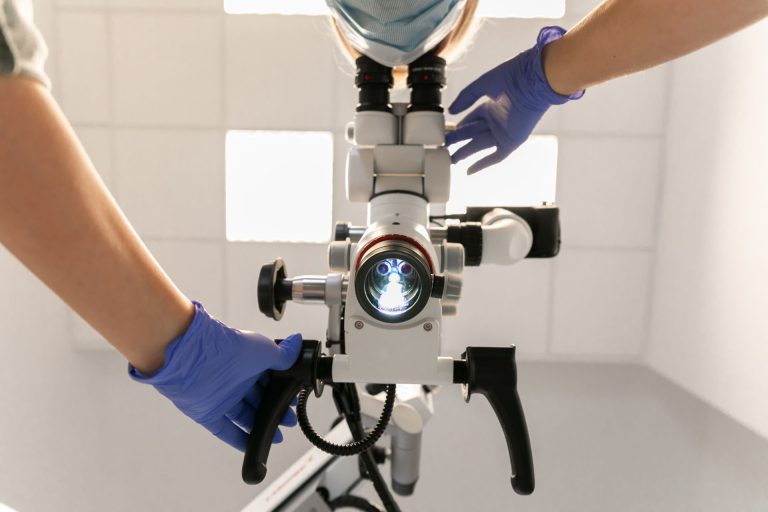
Speciális tudás
Nálunk nincs futószalag, a minőségi fogászathoz idő kell
A Vital Pulpa Kezelés kivitelezése speciális szakértelmet igényel. Rendszerint azok a fogorvosok mélyülnek el ezen a szakterületen, akik biztonságosabbat, sikeresebbet akarnak annál, mint amire a hagyományos fogászat képes. Az ilyen munka több időt, nagyobb precizitást kér a fogorvostól és nagyobb türelmet a pácienstől.
Rendelőnk kifejezetten specializálódott a kritikus állapotú fogak megmentésére. Ha szeretne többet megtudni a Vital Pulpa kezelésről, olvassa el esetbemutató blogcikkünket!
Tudjon meg többet problémájáról
Szeretne megbízható helyről tájékozódni fogászati kihívását illetően? Közérthető szakmai írásainkból minden kiderül. A cikkeket tapasztalt fogorvosok írják!

